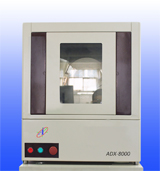ADX-2500 X-ray Diffraction Instrument
VIEW MORE+-

-
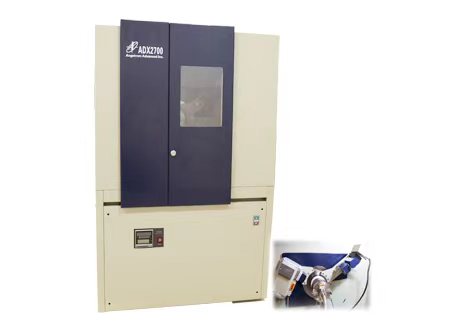
ADX-2700 X-ray Diffraction Instrument
VIEW MORE+ -
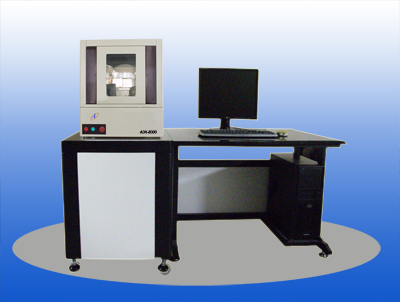
ADX-8000 Portable X-ray Diffraction Instrument
VIEW MORE+ -
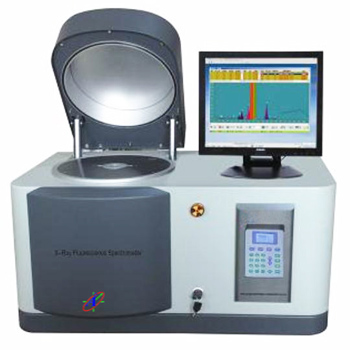
ADX-9800 Energy Dispersive X-Ray Fluorescence Spectrometer
VIEW MORE+ -
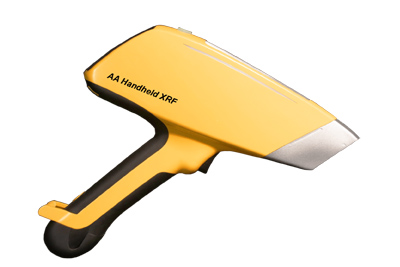
AA XRF Handheld Portable Energy Dispersive X-ray Fluorescence Spectrometer
VIEW MORE+
ADX-8000 Mini θ - θ Powder X-ray Diffraction Instrument
Inquiry and Sales: sales@angstrom-advanced.com or Online Request
ADX-8000 mini θ-θ Powder X-ray Diffraction(XRD) is a multi-function X-ray diffractometer with exceptional analysis speed, reliability and reproducibility. The ADX8000 XRD has been uniquely designed for the challenges of modern materials research, where the lifetime of a X Ray diffractometer is considerably longer than the horizon of any research project. Components are top of the line and provide for a powerful system. The ADX8000 Desktop XRD has capability for powders, liquid, thin film, nanomaterials and many other different materials. The ADX8000 X-ray Diffraction can be used for many different applications - Academic, Pharmaceuticals, Chemical & Petrochemical, Materials Research, Thin Film Metrology, Nano technology, Food & Cosmetics, Forensics, Mining & Minerals, Metals, Plastics & Polymers, etc..
- Atomic-scale of resolution
- Large sample size
- DSP(Digital Signal Processing) for great performance
- Real time operating system embedded
- Fast Ethernet connection with computer
General diffraction data processing: automatic peak search, manual peak search, integral intensity, separation of Kα1,α2, background remove, lattice parameter, volumes and atomic position, phase analysis, crystallographic strain, pattern smoothing and magnifying, multiple plot, three-dimensional plot and simulation of X-ray Diffraction(XRD) pattern et al.
- Qualitative Analysis
The data processing software of the Portable XRD has the search and match function on the base of whole profile and diffraction angle. The profile matching procedure employs the designed mode to do the qualitative analysis by reducing the search range from major, minor, to micro phase without indicating the diffraction angle. The diffraction angle matching procedure is based on the peaks position and intensity and usually used for the qualitative analysis of the data with large angle error.
- Quantitative Analysis
After the phase composition is determined, the content of each phase could be calculated with the help of RIR or/and the Rietveld refinement (Quantitative Analysis without criterion). Phase identification, structure & microstructure analysis, thin film analysis, stress investigation, texture analysis are all available. PDF-2, PDF-4 Series Data base, ICDD, Search & Match, Crystallographic Search & Match
- Plot and Export
The data processing software is operated with Windows interface. The preparing exported pattern could be labeled, zoomed in, zoomed out and also copied and pasted.
X-ray Generator
| Control mode
| 1kV/step, 1mA/step controlled by PC
| Rated output power
| 600W, 1200W
| Tube voltage
| 40 kV continuously adjustable
| Tube current
| 13 ~ 30mA continuously adjustable
| X-ray tube
| Cu (2.4KW) Focus dimension: 1x10 mm2 LFF Ceramic or Glass
| Stability
| ≤ 0.001%
| |
Goniometer
| Goniometer
| θ - θ
| Diffraction circle semi-diameter
| 150mm
| Scan range of 2θ
| -6° ~ 150°
| Continuous scanning speed
| 0.0012° ~ 70°/min
| Setting speed of angle
| 1500°/min
| Scan mode
| θ-θ linkage, 2θ, 2θ continuous or step scanning
| One way repeatability of θ
| ≤ 0.0001°
| Minimal stepping angle
| 0.0001°
| precision of θd or θs
| ≤ 0.0001°
| Filter
| Ni
| Slits
| Divergence slit, Scattering slit, receiving slit
| |
Record Unit
| Counter
| Proportional Counter
| Maximal CPS
| 5×105 CPS , 5×107 CPS
| Proportion counter energy spectrum resolution
| ≤ 25%(Cu, Ka)
| Detectable high voltage
| 1500-2100V continuous tune
| System detector stability
| ≤ 0.03%
| High voltage of the counter
| differential or integral, automatic PHA, dead time emendation
| System detector stability
| ≤ 0.03%
| Sample Stage
| Z Adjustable
| |
Integrated performance
| Dispersion dosage
| ≤ 1μSv/h
| Integrated stability of the system
| ≤ 0.1%
| Micro Structure
| Micro Structure analysis, +/-0.5nm
| Micro Diffraction
| Micro sample or area, 2nm ~ 19um
| Dimension
| 24 X 16 X 26 Inches
| |
